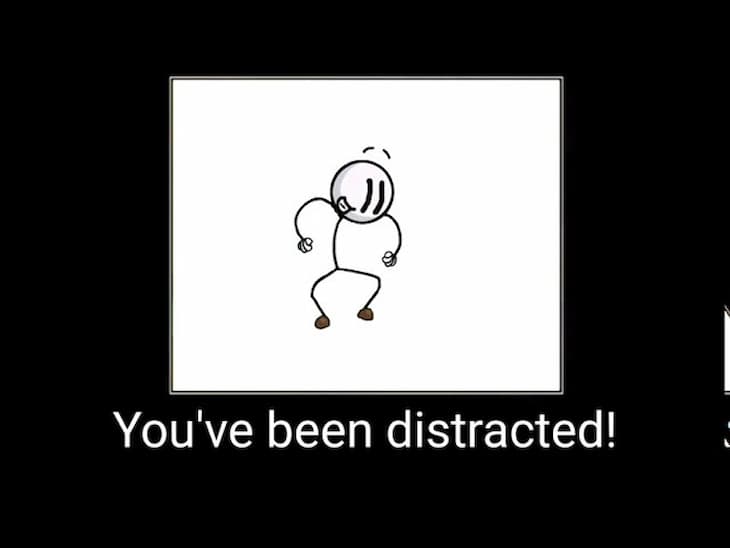I put together the strategies and advice that work, so you don’t have to look for them elsewhere.
Getting up at 5am. Taking cold showers. Meditating. Keeping a diary. Reading tons of books — at least 52 a year, so one per week. Planning your days minute after minute.
Do these sound familiar? We’re literally swarmed by such advice. We have books, articles, podcasts, webinars and whatnot. We try to follow these guidelines, but then give up easily at the slightest inconvenience. That’s because we forget about one thing: there’s no one-size-fits-all and this applies to such advice as well. What works for some may not work for others.
There’s also one precious resource we lack: time. We just can’t squander it on all these ideas.
So, which ones worked for me and how did I find that out? I’ll tell you in a bit. But first, an important question:
Did you know that the one who robs you of your time is yourself?
Social media, TV, browsing the Internet pointlessly. You’re not getting back any of the time you wasted on these.
You might argue that this is just something you do for fun, just to unwind a little bit. But that’s just a trick played on you by the primal part of your brain which makes you choose the more pleasant things. What can you do about that?
Well, the simplest and perhaps the most effective method is keeping track of the time you spend online. Android and iOS systems offer built-in statistics trackers that can help you find out what’s the biggest time thief.
Leave important things for tomorrow, do something fun now? No way, Jose!
Procrastination, i.e. postponing things we should do now in favor of those that we think are more important or — most often — enjoyable, is something that everyone struggles with.
You’re probably all too familiar with a scene like this: you need to write a simple email that is nevertheless super crucial, as it might convince a prospective customer to work with your company. This means more revenue. And yet you see notifications popping up on your mobile. You know what I’m talking about, don’t you? Most of us tend to postpone the email, and check out the updates instead.
What can you do to fight procrastination, then? A good method is to answer the following questions:
- What is better for me in the longer run?
- Does this distraction, even if momentary, this pleasure of sorts bring me closer to my goals?
Multitasking Ninjas Actually Don’t Exist
You need to realize that multitasking is a myth. Imagine you’re at a meeting, but at the same time you’re writing emails and replying to your colleagues. Obviously, each task is performed poorly. But if you do them separately instead, you can devote enough attention to them and avoid costly mistakes.
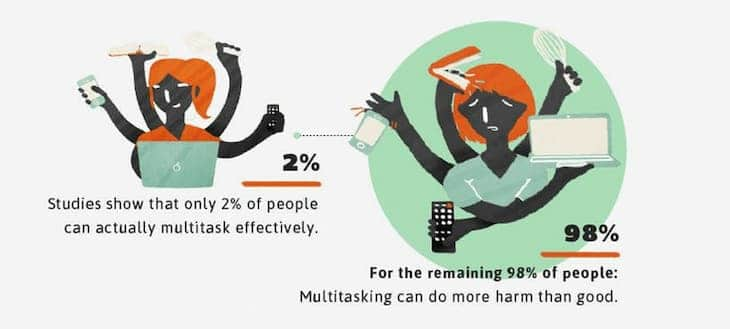
Remember that spending twice as much time working on a thing doesn’t mean twice as much actual work.
Of course multitasking works when it’s related to automatic functions of our brains. So, we can drive and talk to people over the hands-free system, or exercise on a training bike while watching your favorite Netflix shows.
What’s your current energy level?
Did you know that your energy levels vary throughout the day? A combination of proper amount of sleep, a well-balanced diet, exercises and enough rest has a positive impact on your well-being, but it’s worth remembering that generally for the most of us mornings are best for analytical tasks that require focus on precision. Around noon energy levels drop, which means we should focus on repetitive and less intense assignments. You get a boost in the afternoon, so this is when you can perform more creative tasks.
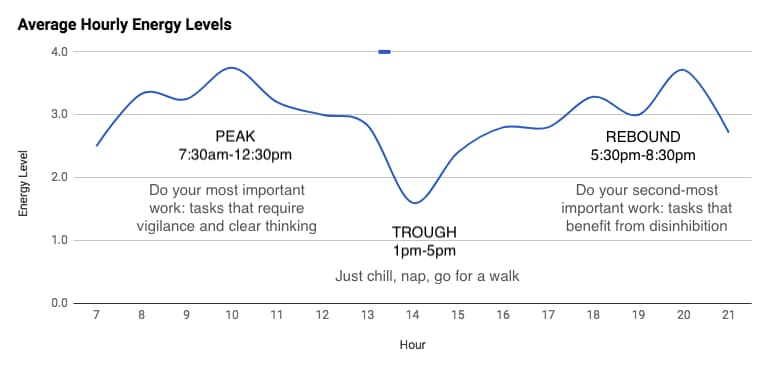
It’s super important for you to know when’s your energy peak and adjust your work plan accordingly. For most people this will be the first 2–4 hours of the day, but your mileage might of course vary.
Write down, plan, set priorities
In his book titled The 7 Habits of Highly Effective People, Stephen Covey mentions a survey where around 2.5 million people were asked a simple question:
Do you systematically plan to achieve your most important goals?
Can you believe that only 8% responded with a yes? That’s just mind-boggling.
If you’d like to join this elite club, here’s a couple of steps to get you started:
1. Make a list of goals
“Your mind is for having ideas, not holding them.”
– David Allen, “Getting Things Done”
Make writing your tasks down the highlight of your day. Try to find the best moment for that. Once your list is ready, you can manage them without having to remember about them.
There are so many tools you can use for that: notebooks, journals, boards, but also apps such as Todoist, Microsoft ToDo, ClickUp, Nozbe, Asana and Trello.

There are many solutions on the market that support writing tasks. We have notebooks, journals, boards and also applications — such as Todoist, Microsoft ToDo, ClickUp, Nozbe, Asana, and Trello. All these have both mobile and browser versions, and synchronize well between the devices.
By listing your tasks, you can look at them from a broader perspective, which lets you prioritize them, assign them to groups, tag them and set deadlines for their completion.
2. Pick the Most Important Task (MIT) for the day from your list
From the list of your tasks, pick one you think is the most important for the day and ask yourself the following questions:
Once you’ve made your choice, ask yourself these questions:
- How much time do I need to complete this task?
- When would I like to do that? (it’s good to take your energy levels into consideration here)
Next, write it down in your calendar. Set time aside to focus solely on this task.
3. Determine what is Important, and what is Urgent
The Eisenhower Matrix, named after a US president who created it, is a handy tool for managing large lists of tasks. Dwight Eisenhower divided his assignments into two groups according to their importance and urgency. This resulted in a matrix (sometimes known as a square) that comprises four fields:
- Do: tasks which should be handled preferably now or in a very near future,
- Schedule: these should be done at a later time,
- Delegate: hand these over to other people,
- Eliminate: forgo doing these completely.
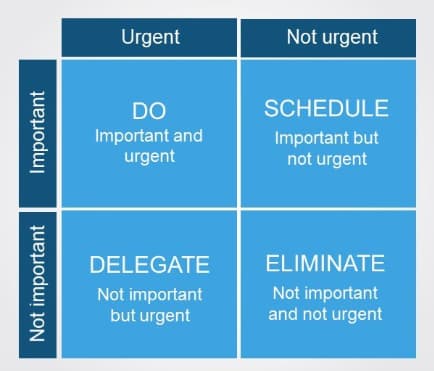
What’s the difference between urgency and importance? Important tasks are those that contribute to your long-term goals the most. Urgent ones, on the other hand, have a set deadline which draws near.
4. Use the 2-minute rule
This method was strongly popularized by David Allen in his Getting Things Done, a book I quoted above. Its premise is simple:
“If an activity to be performed does not take more than two minutes, it should be done immediately.”
Bear in mind, however, that this method shouldn’t be a reason to put more important tasks aside. This is why I use the following additional rules:
- If I work on either MITs, Important or Urgent tasks, I don’t add put any new tasks on my to-do list.
- Once I’m done with my backlog, I move on to the new assignments straight away.
5. Use the Pomodoro technique
Named after the shape of a kitchen timer, this method has you dividing tasks into 25-minute segments where our work should be focused and intense. Next, you rest for about 5 minutes. After 4 such segments, it’s good that you take a longer, 20–30-minute break.

The Pomodoro technique is effective because it’s quite easy to plan 25-minute segments in your schedule. 5-minute breaks can do wonders to your back, eyes, and efficiency. Give it a shot, it’ll be worth it!
This method is also good for the most important tasks that you scheduled in your calendar.
Can I apply these tips in…video games?
Yes, absolutely! Games can be a perfect opportunity for you to practice prioritizing tasks and see which methods work. Take real-time strategies like StarCraft 2, for example. If you want to succeed in online matches, you need to choose proper build orders and act based on a very tight schedule. In many ways, the victor is the one who makes better choices and does that faster at that — command skills aside, that is.
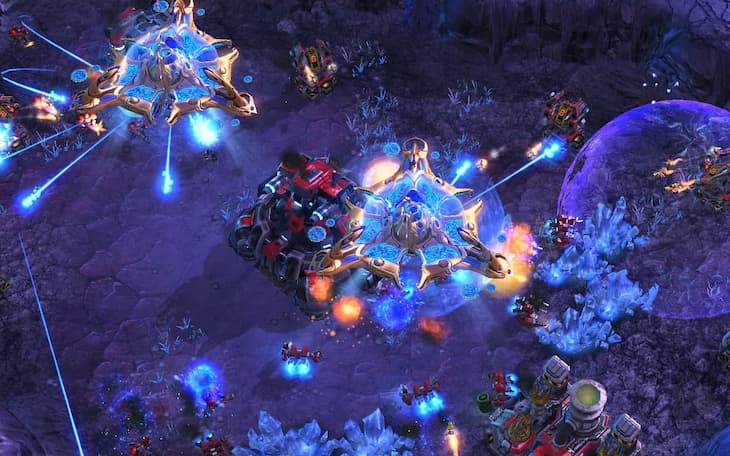
Alternatively, you can take tower defense games into consideration. Such games require you to adjust your defensive measures to incoming threats, focus your fire on the most dangerous enemies so that they don’t break through, and prepare for future waves in advance. Kind of sounds like the Eisenhower Matrix, doesn’t it?
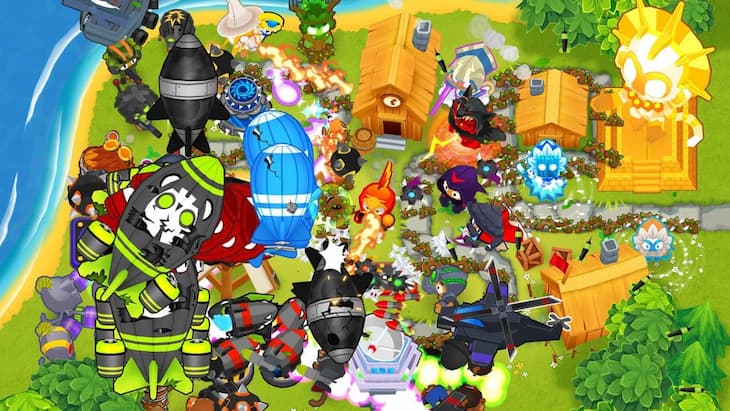
Turns out MMORPG games are also an amazing exercise in prioritization, especially when it comes to being in guilds. Sure, each guild has its plans, schedule and goals that must suit the majority of its members, and it might be difficult for you to adjust to that if you’re a busy person. But as Robin Torres, a Drama Mama and an experienced WoW player noticed, the most reliable “guildies” are the ones with loads of real-life responsibilities. Why? Because they value not just their time, but also the time of others, and are masters of both scheduling and flexibility.
So, why not try out some time management strategies in a favorite game of yours?
The tips above pretty much sum up what I figured out about what works best for me. I hope this will encourage you to read more about the topic and will be a good guideline for you. The methods I mentioned are just the tip of iceberg, but they will get you started on the path to focusing on the most important stuff.
Interested in more? Aside from the books I mentioned, be sure to check out “Make Time: How to Focus on What Matters Every Day” by Jake Knapp and John Zeratsky, as well as Matt D’Avella’s blog.
by Ireneusz Sas, Technical Assistance Center Lead at G2A.COM
Back